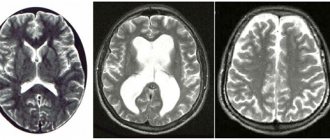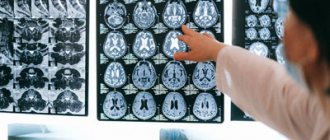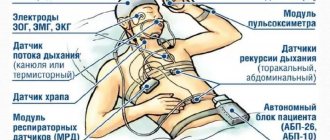In 1912, a special hereditary pathology was described simultaneously in our country and abroad, which received its name from the authors - Wilson-Konovalov disease. This is a hereditary disease and it is dangerous. Let's find out with an expert whether it can be cured.
ALENA PARETSKAYA
Pathophysiologist, immunologist, member of the St. Petersburg Society of Pathophysiologists VALENTINA KUZMINA Candidate of Medical Sciences, neurologist at SM-Clinic
One of the most characteristic signs of the disease is the pathological accumulation of copper in the area of various organs, tissue damage, especially – liver, nervous system problems, changes in the iris of the eye.
What is Wilson-Konovalov disease
The term Wilson-Konovalov disease refers to a hereditary pathology.
It occurs when parents pass on a defective gene (ATP7B) to their child. The condition is an autosomal recessive pathology, that is, it occurs if each of the parents carries a similar gene in their cells and the child inherits both genes at once - from the mother and from the father. This defective gene gives instructions for the synthesis of a protein that regulates the exchange and transport of copper within the body.
When it is defective, copper accumulates in the liver, concentrates in the nerve ganglia, and is deposited in the iris of the eye. The pathology is rare and is sometimes very difficult to recognize, especially if there are no similar patients in the family.
Diagnosis of the disease
Often, Wilson-Konovalov disease is diagnosed only at the stage of severe cirrhosis. This is due to the difficulties of diagnosis. A screening test for the disease - a decrease in ceruloplasmin in the blood serum - can give both false-positive (with liver cirrhosis of another origin, nephrotic syndrome, protein starvation, maladsorption) and false-negative (with active inflammation in the liver, taking hormonal contraceptives, during pregnancy, during multiple sclerosis) results.
A slight decrease in the amount of copper in the blood serum and a multiple excess of its normal amount in the urine (more than 100 mcg/day with a norm of up to 40 mcg/day) may be diagnostically significant, but with an asymptomatic course of the disease, these indicators may remain within normal limits.
Therefore, in doubtful cases, a liver biopsy and genetic analysis are performed to determine the presence of the defective gene.
Traditional clinical and biochemical blood tests, as a rule, are not indicative: anemia, thrombocytopenia, increased ALT, AST and bilirubin, a decrease in albumin and prothrombin index are possible. But all these signs are characteristic of most liver diseases, and not just Wilson-Konovalov disease.
Causes of Wilson-Konovalov disease in adults
The key process in this pathology is the inheritance of a defective gene from parents.
It is located on chromosome 13 and regulates copper metabolism. On average, the body of adults contains approximately 50 - 70 mg of copper and per day it needs no more than 2 mg of the element, which comes from food.
The vast majority of the microelement (95%) is transported in close association with the plasma protein – ceruloplasmin. It is constantly produced by the liver, and only about 5% of copper is transported along with albumin.
Copper is needed to participate in metabolic processes, including oxidative ones. If Wilson's disease develops, its elimination is impaired, the concentration in the plasma increases, and from there it spreads to the tissues. The main accumulation of copper occurs in the brain, in the iris, inside the liver, and also in the kidneys. Excess microelement has a toxic effect.
How does a doctor identify a disease?
Diagnosis of Wilson-Konovalov disease is complex. Diagnosis is carried out by a therapist, gastroenterologist and neurologist. Since pathology affects genetics, related specialists may be involved when conducting a comprehensive examination. The first stage of diagnosis includes collecting an anamnesis (studying the patient’s history) and conducting an external examination.
Signs of Wilson-Konovalov disease include the appearance of a brown ring on the cornea, which is formed due to excess copper levels. In this case, the diagnosis of Wilson's disease involves the use of a slit lamp. However, the method is not suitable for patients under 5 years of age.
Disturbances in facial expression, movement coordination and motor skills, which affect most people with this disease, are also subject to study. A competent examination allows you to assess the extent of damage to the body and prescribe the necessary examination. Typically it includes:
- general blood and urine analysis;
- blood test for copper and ceruloplasmin levels;
- urine test for daily copper excretion;
- slit lamp examination to detect Kayser-Fleischer rings;
- genetic tests of the patient and his relatives;
- Ultrasound of the abdominal organs;
- CT or MRI of the brain to detect characteristic changes;
- liver biopsy if the diagnosis is questionable.
Attention! These diagnostic methods are used to exclude other diseases with similar symptoms. They must be prescribed by a doctor.
Symptoms and treatment of Wilson-Konovalov disease are reviewed and discussed not only by these specialists, but also, if necessary, by an ophthalmologist, dermatologist, rheumatologist and endocrinologist. The data obtained with the help of highly specialized specialists is summarized and allows you to make a diagnosis, and then create a plan for further action.
Symptoms of Wilson-Konovalov disease in adults
Possible manifestations are very diverse.
Most often, the liver is affected (about 40 - 50% of cases), and in other cases, neurological damage and mental problems may occur. When the nervous system and vision are damaged, a typical symptom appears - the manifestation of the Kayser-Fleischer ring (occurs due to the deposition of copper in the iris with its specific brown coloration). In the abdominal form of the disease, symptoms usually appear closer to 40 years of age. Among the key features:
- cirrhosis of the liver;
- chronic or fulminant (fulminant) hepatitis.
In childhood, the rigid-arrhythmohyperkinetic variant of the disease occurs more often.
It begins with rigidity (compaction, poor compliance) of muscles, disturbances in facial expressions, speech disorders, problems with performing movements requiring fine motor skills, and a slight decrease in intelligence. The disease is progressive, with periods of exacerbation and remission. The variant of shaking Wilson's disease usually occurs in the age range from 10 years to 30 - 35 years. Symptoms such as trembling, slow movements, speech inhibition, epilepsy attacks, and mental problems may occur.
The rarest form of the disease is extrapyramidal-cortical disorders. It is similar to all forms, in addition there will be convulsive attacks, severe intellectual problems, and movement disorders.
Symptoms
The disease usually begins to develop in adolescence or young adulthood. Symptoms such as increasing muscle rigidity, hyperkinesis of various shapes and amplitudes, trembling of the limbs, torso, head, speech and mental disorders come to the fore. Sometimes epileptiform seizures additionally occur. A general examination can often reveal tenderness and enlargement of the liver.
Also a characteristic symptom, which is one of the main diagnostic criteria, is the presence of a greenish ring on the iris - the Kayser-Fleischer ring.
Depending on the severity of certain symptoms, various forms of the disease are distinguished (according to N.V. Konovalov):
- Abdominal. There are no or mild neurological symptoms. There are only mild hyperkinesis and mental changes. Liver failure comes to the fore. The disease progresses rapidly and is almost always fatal. When the disease lasts for more than 3 years, neurological manifestations may be observed.
- Rigid-arrhythmic hyperkinetic. Develops more often in childhood. It is represented by the development of muscle contractures, speech disorders, forced laughter, crying, bulbar disorders, and delayed mental development. Progresses rapidly, leading to death.
- Trembling. Typically develops in adults. It is represented mainly by tremors in the hands, changes in the psyche, and muscle hypotension. It proceeds slowly, and epileptiform seizures often occur. The average life expectancy can be 15 years or more.
- Trembling and rigid. The most common form of Wilson-Konovalov disease. It occurs slowly and begins in adolescence. Increasing muscle rigidity, hyperkinesis, and rhythmic trembling are noted. Symptoms usually occur during sleep. pass completely. The average course of the disease is 6-8 years.
- Extrapyramidal-cortical. It is extremely rare.
Diagnostics
If eye symptoms are present, the doctor will first examine the eyes with a slit lamp to confirm the presence of a Kayser-Fleischer ring.
The appointment of biochemical tests of blood and urine is indicated, which will show an increased copper content in the urine and a reduced concentration of ceruloplasmin in the blood plasma.
A CT or MRI will show atrophic processes in the brain and cerebellum, damage to the basal ganglia.
Additionally, a consultation with a geneticist and a series of genetic tests are carried out to identify defective genes.
Treatment
Treatment of Wilson-Konovalov disease should be carried out with drugs that increase copper excretion. Among them, the most widely used drugs are unithiol and penicillamine. Additionally, symptomatic therapy is carried out with muscle relaxants (to reduce muscle tone), antiepileptic drugs, if necessary, as well as hepatoprotective agents.
In all cases, it is also necessary to prescribe a special diet with limited copper. Cucumbers, dried fruits, nuts, and products made from the liver of animals and birds must be excluded from the diet. Restrictions are placed on the consumption of chocolate and some seafood.
During treatment, sometimes there is a complete disappearance of the symptoms of the disease. Timely treatment can increase the life expectancy of patients.
Medical genetic counseling is of relative importance if there is medical history evidence for the presence of Wilson-Konovalov disease in close relatives. The concentration of ceruloplasmin in the blood plasma and the presence of gene defects located on the 13th chromosome are determined. If defective genes are detected in both parents, we can assume a 25% chance of having a sick child.
Modern methods of treatment
The main method of treatment for this disease is the prescription of thiol drugs, especially unithiol or D-penicillamine, cuprenil.
The drugs are taken for a long time, the doctor selects the most optimal dose to avoid side effects. Additionally, the doctor may use drugs from the group of antipsychotics; for muscle stiffness, levodopa or carbidopa.
In severe cases, liver transplantation and immunosuppressive therapy are indicated. It is possible to use biohemoperfusion with an isolate of living cellular elements of the spleen and liver.
Additionally, it is necessary to follow a diet excluding foods containing large amounts of copper.
Prevention of Wilson-Konovalov disease in adults at home
“To prevent pathology,” says neurologist Valentina Kuzmina, “it is necessary to adhere to diet No. 5, and also limit copper intake to 1 g per day - exclude nuts, dried fruits, chocolate, crayfish, cookies, whole wheat. It is also recommended to take drugs from the vitamin B6 group, unithiol, trientine.
What kind of disease is this
Chromosome 13 contains the gene that causes the development of pathology. With its help, copper is transported into bile and incorporated into ceruloplasmin (a protein found in the blood). Thus, the causes of Wilson-Konovalov disease are genetic.
The disease is inherited according to an autosomal recessive mode of inheritance. It occurs when both parents pass on a defective gene.
The normal copper content in the body of a healthy person is considered to be no more than 100–150 mg, with a daily requirement of 1–2 mg. If an excess is observed, it is excreted from the liver into the blood or through bile. The amount of copper-binding protein in the blood (ceruloplasmin) decreases.
As a result, copper enters freely into the blood and other organs and begins to be deposited in them. The highest concentration is observed in the liver, kidneys, and nervous system. Toxic damage to these organs is noted. A so-called Kayser-Fleischer ring appears on the cornea of the eye: a brownish deposit of copper along the rim of the pupil.











